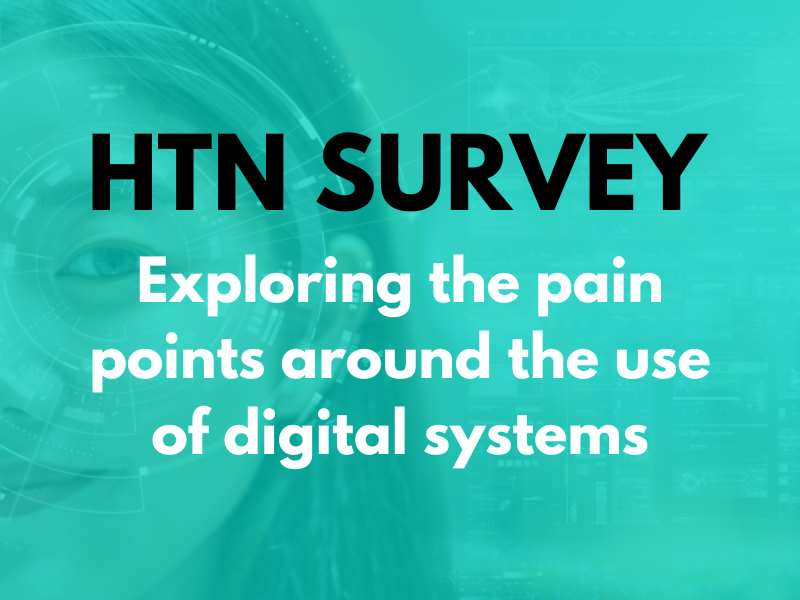By Bryn Sage, Chief Executive of Inhealthcare for HTN Digital Week.
Whichever way you look at it, the UK’s social care system is under huge pressure. At current spending levels, a funding gap of £18bn will open up during the next decade, according to the Health Foundation. In stark terms, this means increasing numbers of vulnerable people who need care and support because of age, illness or disability will be left to fend for themselves, which will put increasing strain on the front line of the NHS.
Don’t despair. Britain might be facing a ticking time bomb but new technologies are coming to the rescue and forming a new united front for our care services. Simply put, the linking of remote monitoring tools with new wireless networks can transform the health and care system for the benefit of people, providers and the public purse.
Double down on tech agenda
Politicians of all stripes have been struggling to come to terms with the social care issue. In the Queen’s Speech, the Government vowed to seek cross-party consensus on proposals for long term reform of social care. The Secretary of State for Health and Social Care, Matt Hancock MP, used his first announcement since the general election to announce his department would “double down on the tech agenda… to ease the burden on staff, give people the tools and information to manage their own healthcare, and make sure that patient data can be safely accessed wherever and whenever it’s needed across the system”.
Live healthier lives for longer
On the ground, NHS and local government bodies are working together to integrate health and care services in regions across the country. By combining forces and taking a joined-up approach, these new integrated care partnerships are designed to help people live healthier lives for longer and keep them out of hospital when they do not need to be there.
At the same time, a number of local authorities across the UK are starting to deploy low power wide area networks to enable the delivery of “smart city” services. These are based on connected devices known as the Internet of Things that gather and share data to help improve public services and quality of life. Such networks are easy to install, flexible, scalable, secure and, most importantly, inexpensive. They also work indoors and have long battery life.
Independent living for patients
Home monitoring and assisted living technologies have evolved in leaps and bounds in recent years. NHS trusts are embracing the opportunity to support independent living for patients and reap the productivity gains for over-stretched organisations. Instead of travelling to hospital to attend clinic for routine outpatient appointments, people with long-term conditions are choosing to monitor themselves safely and securely in their own home with a hotline to their clinician when necessary.
Telehealth itself is nothing new. In 1925, a US science magazine published a cover showing a doctor diagnosing a patient by radio. The first human spaceflight programme, started by NASA in 1958, included physiologic monitoring over a distance. In the 1970s, the same technology was applied to patients living in rural areas, linking mobile health centres to physicians at hospitals in big cities. The hardware has been around for decades but still tends to be limited, expensive and available only as an inflexible one-size-fits-all package. Unsurprisingly, this approach does not always meet individual need. It certainly struggles to share vital information between the different parts of the health and care system in a non-clunky way.
Intervene when necessary
Change is coming as cloud-based services democratise access to clever new technologies that previously would have been prohibitively expensive. These have the power to manage content delivery, storage, management and high-availability services at a fraction of the cost of lumbering legacy systems. Even the smartphone in your pocket has 100,000 times the processing power of the computer that guided Apollo 11 to the moon.
New services can be redesigned around the need of the individual. A portfolio of different sensors for care providers to choose from, according to personalised need. A monitor for falls? Check. A kettle sensor to monitor regular use? Check. A weekly digital questionnaire for a long-term condition? Check. Sensors are installed in the home, connected to the wireless network and programmed to send timely messages to family and carers so they can intervene when necessary.
Citizen-centred approach
This is one way to design a digital health and care service for the modern age. We call it the citizen-centred approach. It bridges the gap between health and social care at home with a simple set of sensors and supporting software. These enable the seamless sharing of information between different systems, carers and relatives. A simple text message, email or automated phone call can alert a loved one or community nurse to a subtle but significant event, which might make the difference between life and death.
In his speech to the Policy Exchange, the Health Secretary repeated his vow to invest in new infrastructure for the NHS. Of course, 40 new hospitals will be great. But how long before they too are struggling to cope with unfettered demand, with their beds blocked by elderly and vulnerable patients who cannot be transferred back to their communities because the care system is not fit for purpose?
Let’s get it done
Home monitoring technology is coming of age. The switching off of old copper telephone lines, expected in the coming decade, will be a watershed moment. Care providers will be forced to look for alternative communication channels for their emergency red cords. Wireless networks are rolling out across the country. These will enable a new wave of innovation. A solution is emerging for Britain’s social care crisis that can help people live better for longer. You might even call it a revolution. To borrow a phrase, let’s get it done!
* Bryn Sage is chief executive of Inhealthcare. To get in touch, email bryn.sage@inhealthcare.co.uk





